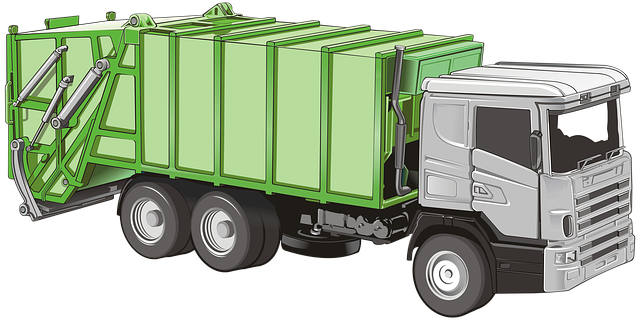Looking to register your car in California? This comprehensive guide breaks down the process step-by-step, ensuring a smooth transition. From understanding essential requirements and gathering vital documents to using a VIN verifier for accurate vehicle identification, you’ll learn everything needed to navigate the California Department of Motor Vehicles (DMV) efficiently. By following these instructions, you’ll be on your way to securing your car’s registration in no time.
- Understand Requirements for Car Registration in California
- Gather Necessary Documents for Car Registration
- Verify Vehicle Identity Using VIN (Vehicle Identification Number)
- Choose a California Department of Motor Vehicles (DMV) Office
- Complete Car Registration Process at the DMV Office
Understand Requirements for Car Registration in California

Before registering your car in California, it’s crucial to understand the requirements and documents needed. In California, vehicle registration is handled by the Department of Motor Vehicles (DMV). To start the process, your vehicle must meet specific safety and environmental standards, which include a valid emissions test. Additionally, you’ll need several key documents, such as proof of ownership through a Vehicle Identification Number (VIN) verifier or mobile VIN verification service, current insurance, and a completed application form.
The VIN is a unique 17-character identifier that can be used to verify the vehicle’s history and ensure it’s not stolen or has any outstanding issues. While traditional VIN verifiers might require you to visit a service center, many modern solutions offer mobile VIN inspection and verification services, allowing for a more convenient registration experience. These services utilize advanced technology to cross-check your vehicle’s data against state databases, ensuring all requirements are met before registering your car in California.
Gather Necessary Documents for Car Registration

Before you begin the registration process, ensure you have all the required documents to make the procedure smooth and efficient. The key document is the Vehicle Identification Number (VIN) verifier, which can be obtained through a mobile VIN inspection or by checking your vehicle’s paperwork. This unique 17-character code is essential for identifying your car accurately.
Other crucial papers include your driver’s license, proof of insurance, and a bill of sale if you’ve recently purchased the vehicle. It’s recommended to have these documents readily available, as they must be presented during the registration at the California Department of Motor Vehicles (DMV) office or when using their online services for car registration.
Verify Vehicle Identity Using VIN (Vehicle Identification Number)

Before registering your car in California, it’s crucial to ensure the vehicle’s identity is verified using its unique Vehicle Identification Number (VIN). This process acts as a foundational step in the registration procedure, providing critical information about the car’s history and specifications. A VIN verifier, whether it’s a mobile vin inspection service or an online tool, plays a vital role in this verification. It helps cross-reference the provided VIN with manufacturer records, ensuring the vehicle’s authenticity and avoiding any potential fraud.
By utilizing these verifiers, you can rest assured that your car’s registration process will be smoother and more accurate. This is especially important when dealing with used cars, as a simple mobile vin verification or inspection can unveil details about previous ownership, accidents, or outstanding issues, safeguarding both the buyer and seller. In California, maintaining a transparent and verified process is essential for road safety and legal compliance.
Choose a California Department of Motor Vehicles (DMV) Office

Choosing the right California DMV office is a crucial step in the car registration process. With numerous locations across the state, it’s essential to select one that suits your needs, especially if you’re considering a mobile VIN inspection or verification service. If you have a busy schedule, a mobile VIN verifier can come to your location for a convenient and quick check of your vehicle’s vital information, including its unique Vehicle Identification Number (VIN). This saves you the time and effort of visiting a traditional DMV office.
For those who prefer a more direct approach or have specific requirements, traditional DMV offices offer comprehensive services, including VIN verification as part of the registration process. These offices are typically well-equipped to handle various vehicle-related matters, ensuring your car is registered correctly and legally. Remember, the right choice depends on personal preference and accessibility, whether you opt for a mobile vin inspection or visit a local DMV in person.
Complete Car Registration Process at the DMV Office

To complete the car registration process in California, you’ll need to visit a DMV office. Here’s what to expect and how to ensure a smooth experience. First, gather all necessary documents, including your vehicle’s registration papers, proof of insurance, driver’s license, and identification with your current address. Once at the DMV, locate the window for vehicle registration and have your documents ready. An agent will guide you through the process, which involves verifying your vehicle’s information using its unique Vehicle Identification Number (VIN). This is done via a VIN verifier to ensure the data matches the records.
If you’re unable to visit the office, consider options like mobile vin inspection or mobile vin verification services that can provide convenience and save time. These services offer alternative means to complete the VIN verification step remotely, making registration more accessible.
Registering your car in California involves understanding the state’s requirements, gathering essential documents, and verifying your vehicle’s identity using a VIN verifier. By completing these steps at a local California DMV office, you’ll ensure your vehicle is legally registered and road-ready. Remember to keep your registration updated and follow all applicable laws for a smooth driving experience.
